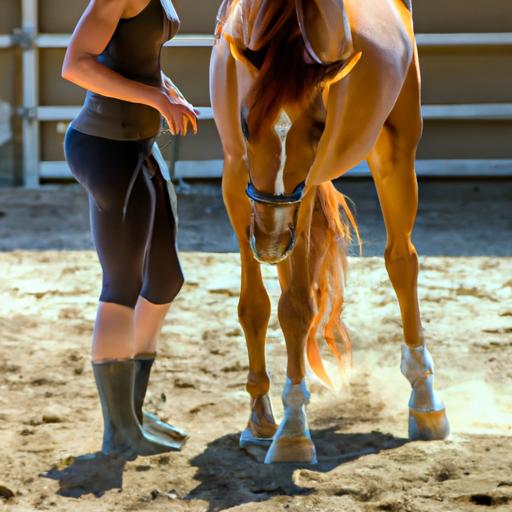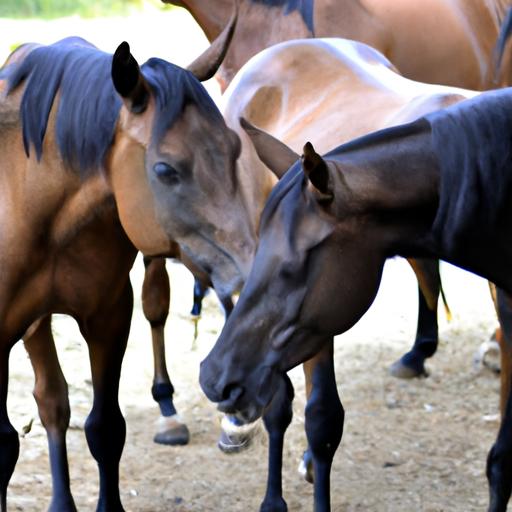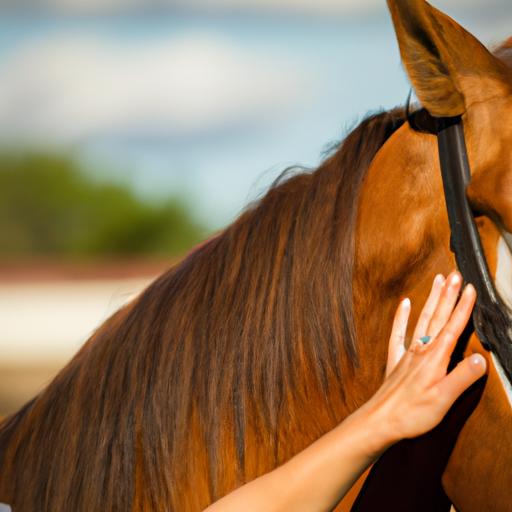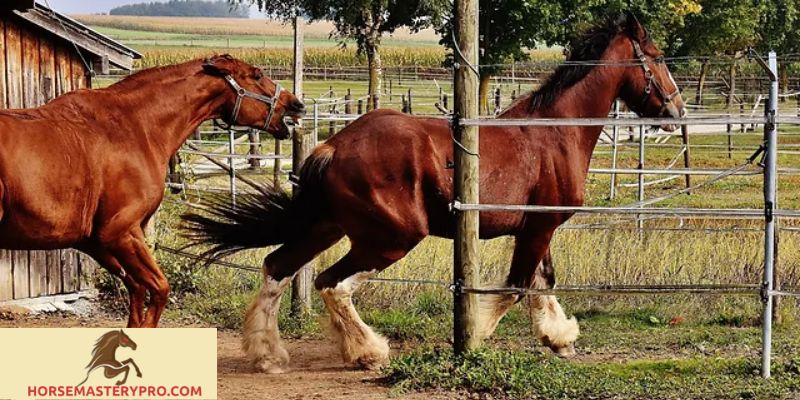Discover the common causes of horse riggy behaviour, including lack of socialization, past trauma, and health issues. Understand and address this behavior for a stronger bond with your equine companion.
When it comes to our beloved equine companions, understanding their behavior is key to providing them with the best care and ensuring their well-being. One particular behavior that horse owners often encounter is “horse riggy behavior.” But what exactly does it mean, and why is it so important to comprehend?
Definition and Significance of Horse Riggy Behaviour

Horse riggy behavior refers to a state of tension or resistance displayed by horses. It can manifest in various ways, such as refusing to move forward, becoming stiff or unresponsive, or displaying signs of agitation and anxiety. This behavior can be problematic for both the horse and the rider, affecting their overall performance and relationship.
Recognizing and addressing horse riggy behavior is crucial as it could be an indication of underlying issues. It serves as a crucial communication from our equine friends, telling us that something is amiss. By understanding the causes and triggers, we can take appropriate measures to alleviate their discomfort and promote a healthier bond.
Understanding the Causes and Triggers of Horse Riggy Behaviour

Horse riggy behavior can arise from various factors, including lack of socialization and bonding, past traumatic experiences, and underlying health issues. Horses are highly social animals, and when deprived of proper social interactions, they may develop behavioral problems. Similarly, horses that have experienced abuse or trauma in the past may exhibit riggy behavior as a defense mechanism.
Furthermore, physical discomfort or pain can contribute to horse riggy behavior. Horses may display resistance when they experience discomfort due to ill-fitting tack, dental issues, or musculoskeletal problems. It is vital to identify and address any health concerns promptly to ensure the horse’s well-being and prevent riggy behavior from persisting.
In the upcoming sections, we will delve deeper into recognizing horse riggy behavior, understanding its common causes, and exploring effective strategies for addressing and preventing this behavior. Join me on this journey of unraveling the mysteries behind our equine friends’ behavior and fostering a harmonious partnership.
Recognizing Horse Riggy Behaviour

Understanding the signs and symptoms of horse riggy behavior is essential for horse owners and enthusiasts alike. By being able to identify this behavior, you can take appropriate steps to address and alleviate any underlying issues. So, how can you recognize if a horse is displaying riggy behavior? Let’s explore the common signs and symptoms.
Signs and Symptoms to Identify a Horse with Riggy Behavior
- Resistance and Stiffness: A horse with riggy behavior may display resistance when asked to move or perform certain tasks. They may become stiff, unresponsive, or reluctant to follow cues or commands.
- Agitation and Anxiety: Riggy horses may exhibit signs of agitation and anxiety. They might paw the ground, toss their head, or show restlessness. They may also have difficulty focusing or have an overall tense demeanor.
- Refusing to Move Forward: When faced with riggy behavior, horses may refuse to move forward. They may plant their feet, back up, or even rear in extreme cases. This can pose risks to both the horse and the rider.
Differences between Normal Horse Behavior and Riggy Behavior
Differentiating between normal horse behavior and riggy behavior is crucial to determine whether intervention is needed. While some horses may display occasional resistance or exhibit signs of frustration, it is important to identify when such behavior becomes consistent and persistent. Here are a few differentiating factors:
- Consistency: Riggy behavior is consistent and recurring, rather than occasional or isolated incidents. It becomes a pattern that affects the horse’s overall performance and well-being.
- Intensity: Riggy behavior often manifests with heightened intensity. The horse may display extreme resistance or show signs of distress beyond what is typical for their temperament.
- Impact on Performance: Riggy behavior can significantly impact a horse’s performance and ability to engage in activities. It may hinder their willingness to cooperate, learn, or perform tasks they previously excelled at.
By recognizing the signs and distinguishing between normal behavior and riggy behavior, you can better understand your horse’s needs and embark on a journey towards resolving any underlying issues. In the next section, we will delve into the common causes of horse riggy behavior, shedding light on why horses may exhibit this challenging behavior.
Addressing Horse Riggy Behaviour

When it comes to dealing with horse riggy behavior, proactive measures can make a significant difference in promoting a positive and harmonious relationship with your equine companion. By addressing this behavior head-on, we can help our horses overcome their challenges and thrive. Here are some effective strategies to consider:
Creating a Suitable Environment and Routine for the Horse
Providing a suitable environment and routine is crucial in addressing horse riggy behavior. Horses thrive on routine and familiarity, so establishing a consistent schedule can help alleviate stress and anxiety. Ensure that your horse has access to adequate turnout time, social interactions with compatible companions, and a comfortable and safe living environment. This will contribute to their overall well-being and mental stability.
Implementing Proper Training Techniques and Exercises
Effective training techniques play a vital role in addressing horse riggy behavior. Implement positive reinforcement methods that focus on rewarding desired behavior rather than punishing undesired actions. Building trust and confidence through consistent and patient training sessions can help your horse overcome their riggy tendencies. Incorporate exercises that encourage relaxation, suppleness, and responsiveness, such as ground work, stretching, and gradual desensitization.
Seeking Professional Help and Guidance for Severe Cases
In some cases, horse riggy behavior may require the expertise of a professional. If your horse’s riggy behavior persists or intensifies despite your efforts, it may be beneficial to seek help from a qualified trainer or equine behavior specialist. These professionals can assess the situation, identify underlying issues, and provide tailored strategies to address the behavior effectively. Their guidance and expertise can make a significant difference in resolving severe cases of horse riggy behavior.
By creating an optimal environment, implementing effective training techniques, and seeking professional guidance when necessary, we can address horse riggy behavior and strengthen the bond with our equine partners. Remember, every horse is unique, and patience, consistency, and understanding are key elements in helping them overcome their challenges.
Preventing Horse Riggy Behaviour

As responsible horse owners, it is our duty to create an environment that fosters positive behavior and prevents the development of horse riggy behavior. By implementing proactive measures, we can ensure the well-being and happiness of our equine companions. Let’s explore some effective strategies for preventing horse riggy behavior.
Early Socialization and Positive Reinforcement Techniques
Early socialization plays a vital role in shaping a horse’s behavior. Introduce your horse to various environments, objects, and experiences from a young age to help them develop confidence and adaptability. Encourage positive interactions with other horses, animals, and humans to foster healthy socialization. Additionally, incorporating positive reinforcement techniques, such as reward-based training, can further enhance their learning and reinforce desirable behavior.
Regular Veterinary Check-ups and Addressing Health Concerns Promptly
Maintaining your horse’s physical health is crucial in preventing riggy behavior. Schedule regular veterinary check-ups to detect any underlying health issues early on. Addressing dental problems, musculoskeletal issues, or any discomfort promptly can significantly reduce the likelihood of your horse developing riggy behavior due to pain or discomfort.
Maintaining a Stress-Free and Consistent Environment for the Horse
Horses thrive in a stress-free and consistent environment. Minimize sudden changes or disruptions in their routine, as these can trigger riggy behavior. Provide a well-designed and comfortable living space, ensuring ample turnout time, access to forage, and appropriate socialization opportunities. Consistency in handling, training methods, and daily care routines will help your horse feel secure and reduce the likelihood of riggy behavior.
By prioritizing early socialization, addressing health concerns promptly, and providing a stress-free environment, you can significantly decrease the chances of horse riggy behavior. Remember, prevention is always better than cure when it comes to nurturing a harmonious relationship with your equine companion.
In the next section, we will explore the conclusion of our discussion on horse riggy behavior and the significance of understanding and addressing this behavior.
Preventing Horse Riggy Behaviour
Prevention is always better than cure, especially when it comes to horse riggy behavior. By taking proactive measures and implementing appropriate practices, we can create a conducive environment for our equine friends, reducing the likelihood of them developing riggy behavior. Here are some key strategies to consider:
Early Socialization and Positive Reinforcement Techniques
Socialization plays a vital role in shaping a horse’s behavior. Introducing them to various environments, other horses, and different stimuli at a young age can help them develop confidence and adaptability. Additionally, incorporating positive reinforcement techniques, such as reward-based training, helps foster a strong bond between the horse and the handler, reducing the chances of riggy behavior.
Regular Veterinary Check-ups and Addressing Health Concerns Promptly
Maintaining the overall health and well-being of our horses is crucial in preventing riggy behavior. Regular veterinary check-ups allow for early detection of any underlying health issues or pain that may contribute to riggy behavior. Addressing these concerns promptly, whether it’s through proper nutrition, dental care, or appropriate medical treatments, ensures the horse’s physical comfort and reduces the likelihood of riggy behavior.
Maintaining a Stress-Free and Consistent Environment
Horses thrive in environments that provide them with a sense of security and predictability. Minimizing stressors, such as sudden changes in routine or exposure to excessive noise, helps create a calm and stable atmosphere for the horse. Consistency in handling, training, and daily activities further reinforces a sense of security, reducing the risk of riggy behavior.
In conclusion, preventing horse riggy behavior requires a proactive and holistic approach. By focusing on early socialization, positive reinforcement, regular veterinary care, and maintaining a stress-free environment, we can significantly reduce the occurrence of riggy behavior in our equine companions. Remember, a harmonious partnership with our horses begins with a foundation built on understanding and addressing their needs.
Horsemasterypro.com


